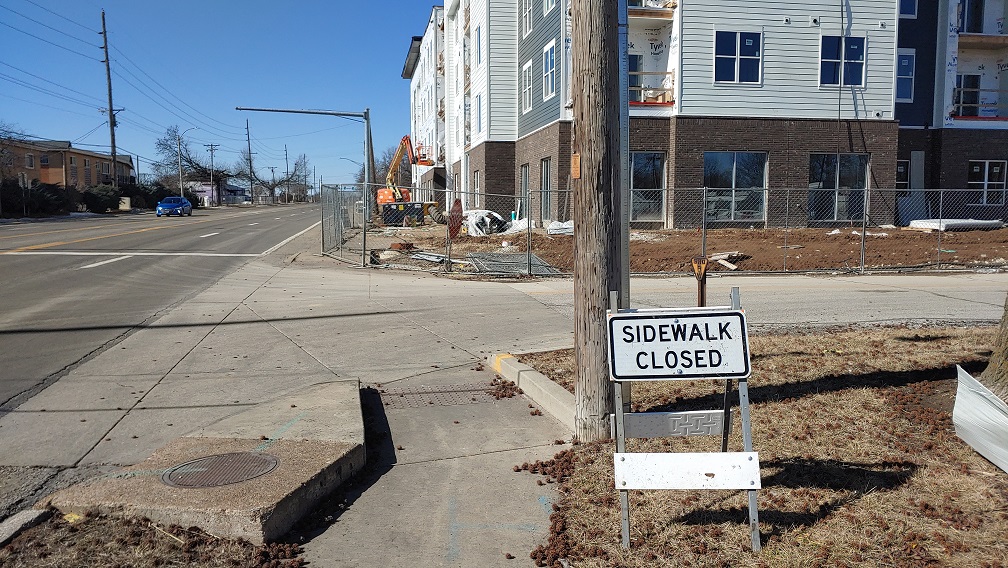
While checking out the developments in Olivette I came upon the typical state of sidewalks abutting a contraction site in the St. Louis area. The sidewalk was closed between Fries and Tower Hill with no provision for a detour. Taking a lane from cars on Olive would be too much to ask, despite there being a center lane which could be repurposed temporarily for the second westbound lane. Crossing the dangerous stroad here would be ill-advised without a stoplight. There is over 2,000 feet between stop lights at Dielman and Indian Meadows.
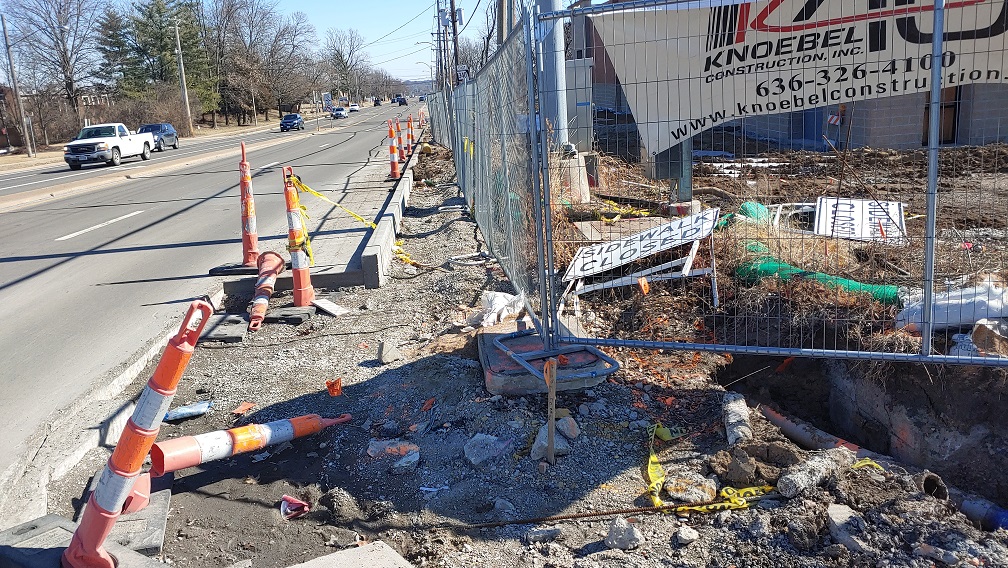
Nearby on the south side of Olive was another closed sidewalk, this one for the constriction of a new Firestone at Dielman. Again no detour. One has to walk the balance beam next to 35+ mph traffic to go east. Fortunately there is a expensive stoplight at Dielman with which to cross the street. Unfortunately the next light is 2,600 feet to the east at North Price, so accessing something on the south side could mean quite an extra long trip to double back. Given the hassle the closed sidewalk creates, the temptation to cross Olive midblock or walk along the construction site is, well tempting.
Strong Towns – An open letter to the City of Springfield
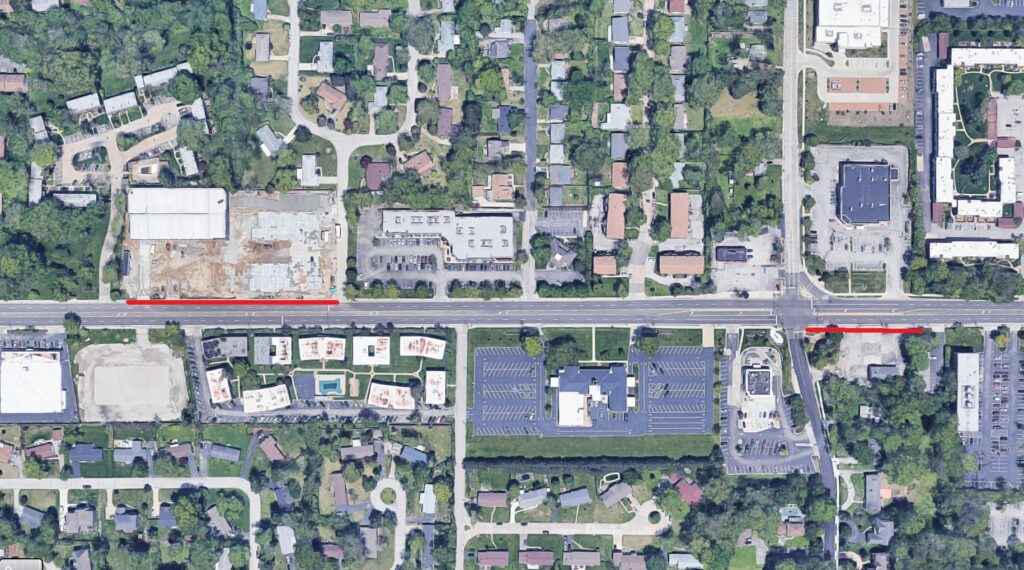
I looked at Google maps on my phone to check for a route off Olive around the closures. A detour could turn out to be a pleasant walk through an Olivette neighborhood. There are none.
The lack of options is evidence of the fragility of the dendritic hierarchical street network. It is vulnerable to single-event interrupts. It doesn’t cope well with stress. The stakes of a disruption are high.
Not just for pedestrians dealing with a closed sidewalk, but for drivers too. If Olive were blocked due to a wreck, drivers would have to go way out of their way to get around, north to Page or south to Old Bonhomme or Ladue Rd.
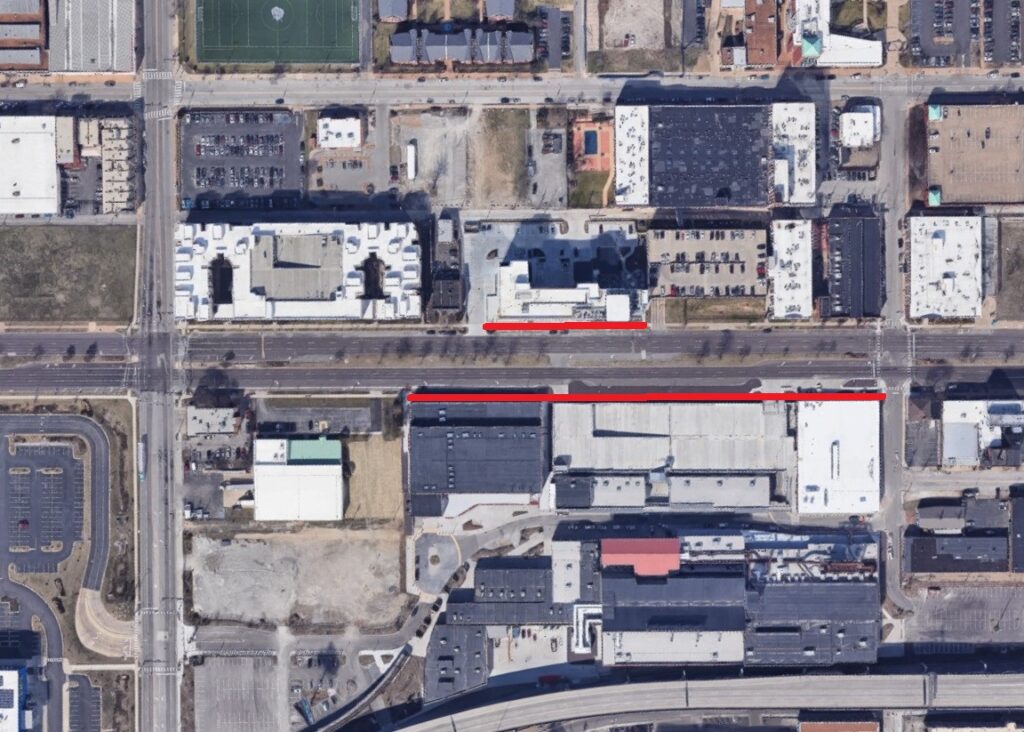
A similar situation occurred on Forest Park Avenue when the Elements Hotel and City Foundry were under construction. Worse for pedestrians, sidewalks on both sides of the same block of Forest Park Ave were closed. Here we see the advantage of the traditional street pattern of many connections- one could walk a block north to Laclede to get around the closure. The distance between lights is 1300 ft here. Not great as that is a long block and there is no parallel street south of FPA, nevertheless this area can better cope with stress than the section of Olive in Olivette.
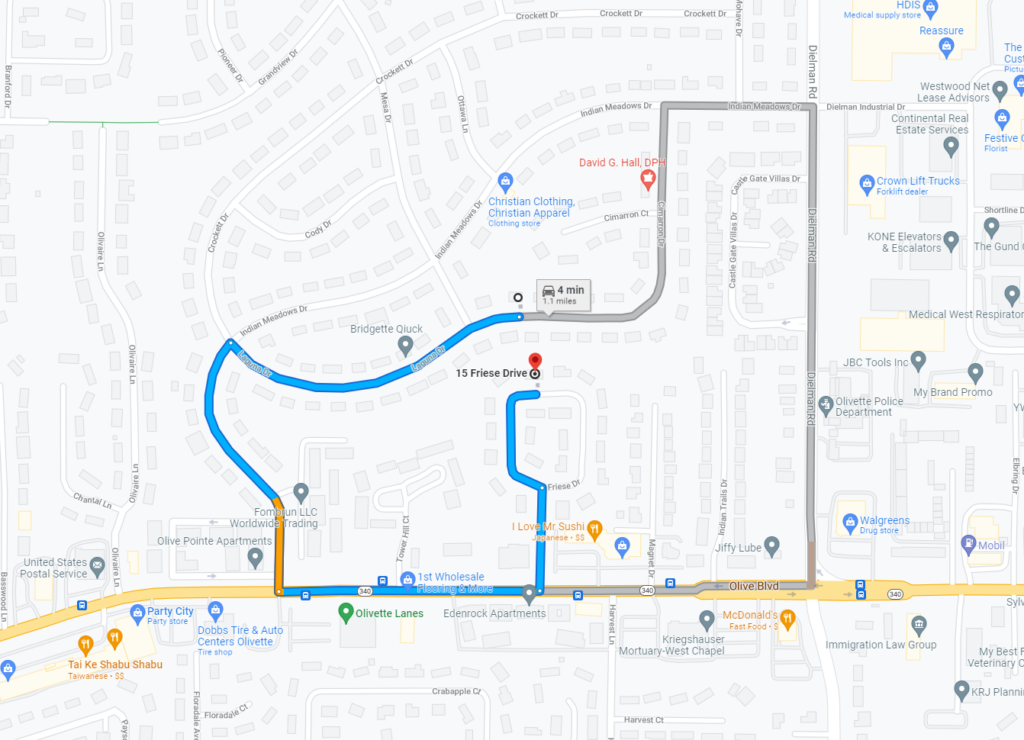
The dendritic hierarchical street network also promotes isolation. The friend your child made at school could be 300 feet away as the crow flies, but 0.8 miles as the car drives.
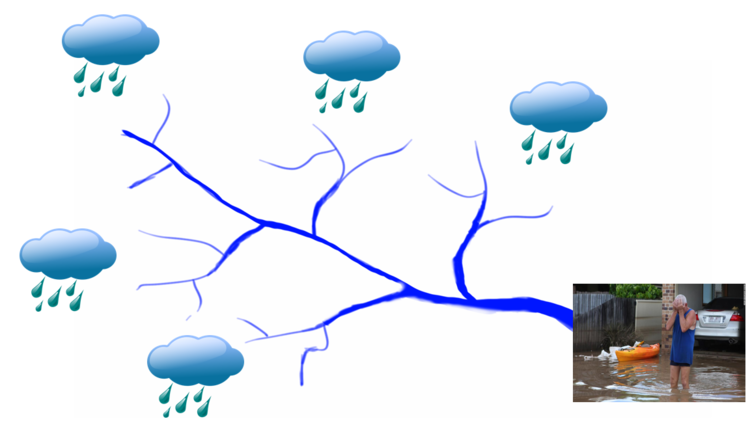
With so many trips being coerced to use Olive, it becomes more congested. The funneling leads to a flooding affect on Olive. The flooding leads to spending to permit Olive to handle more volume at higher speeds resulting in dangerous stroad conditions- more traffic on the road, more expensive infrastructure to take care of not covered by adjacent low-productivity land uses, more people turning left on and off, speeding traffic right next to the sidewalk, hostile to anyone outside of a car like a child cycling to visit a friend.
Strong Towns – Dealing with Congestion
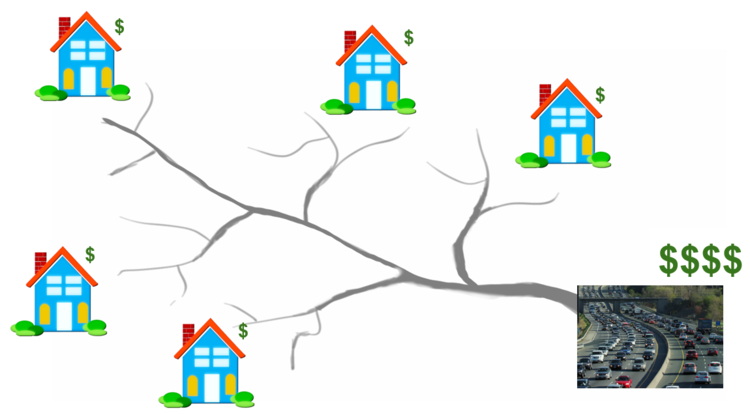
This is but one example of how the dendritic hierarchical street network underperforms traditional high-connectivity patterns. It restricts choices of route and mode, doesn’t cope with stresses as well, and increases risk exposure for all users.

